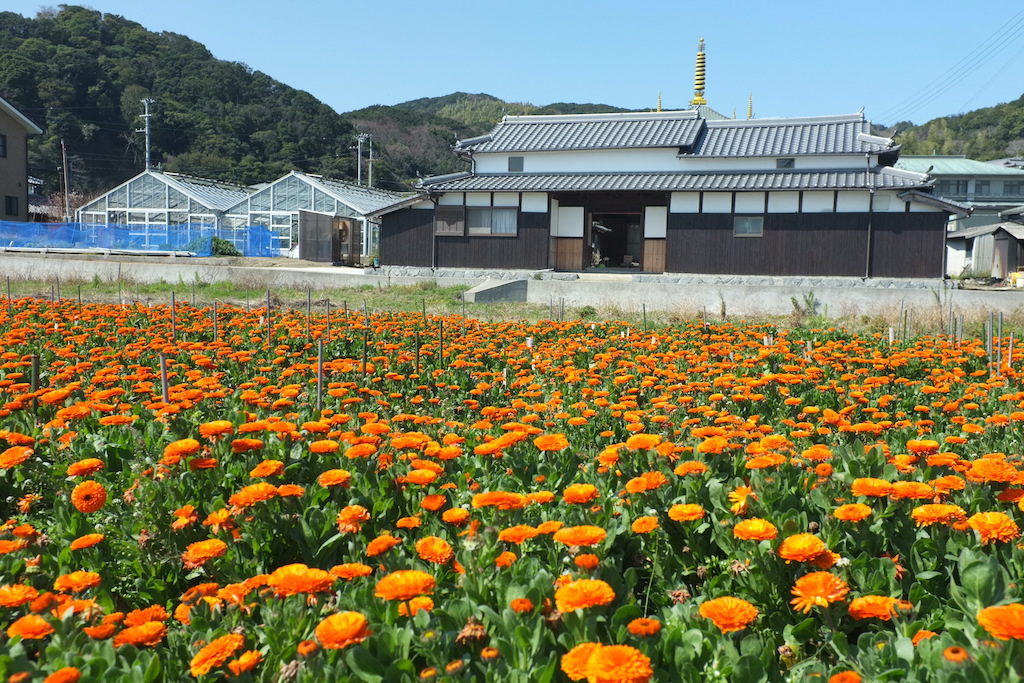
A Japanese Perspective on “Landscape Architecture”
Humanity lives together with our surrounding natural environment, at times exerting influence over it, at other times adapting to its influence over us. This ongoing interaction produces one type of landscape which in Japanese is called “keikan,” meaning the result of mutual influence between nature and human civilization that creates the specific landscape where each person lives.
Determining the shape of the land through this dialogue is no simple matter. In many cases, not all people will support the same creative vision for a certain environment. Such negotiations may devolve into a kind of battleground before being settled, a type of conflict known as a “landscape argument”.
One well known case is that of Kyoto Tower. Some people supported the construction of this tower just in front of Kyoto station, but others were opposed, seeing the modern design of the structure as incongruous with the preservation of the historical landscape in the ancient capital. Recently, debate also erupted in Akashi city regarding the forest surrounding Akashi Castle. The municipal government intended to cut their maintenance budget for the forest and started to remove trees in the beautiful castle area. Opposition arose to the city’s actions that seemed to threaten the beloved space of many citizens. However, the government plan was supported by younger people who saw value in opening the area to businesses like cafes and restaurants. The result was a landscape argument among the citizenry.
The academic study of Landscape Architecture focuses on finding the most suitable ways to evaluate and maintain environments for the good of local residents. Here, Professor Satoshi Yamamoto from the Landscape Planning and Horticulture Academy of Hyogo Prefectural University provides several basic points for a deeper understanding of landscape architecture.
What is landscape? In Japanese, 3 terms are used to describe surrounding environments: keikan, referring to scenery like a town which arises from an interplay of humanity and nature, fukei, referring to the view of naturally formed land, and fudo, a comprehensive term that encompasses natural features of land and climate as well as cultural influences from human activity.

Fig. A typical “fukei” of Awaji Isaland; “Tanada” Rice fields on a slope reflects human activity and lansscape in the Island.
According to Prof. Yamamoto, it is often believed that keikan changes once every decade, fukei changes once every century, while fudo changes once every millennia. Human activity at a certain area creates a specific landscape (keikan) over a 10 year period, which after 100 years may become established as the scenery (fukei) of the area. The fudo reflects the accumulation of both cultural and natural evolution over a period of 1000 years. Pictures of landscapes and scenery on Awaji Island in the Kamakura period under the rule of samurai 1000 years ago, compared with images from the Edo period under Tokugawa shogun 500 years ago, show stark differences between these 2 eras that clearly demonstrate the basic concept of changes in keikan and fukei.

Fig. Beautiful cabbage fields are another example of “Fukei” on the island.
Awaji Island is home to a diversity of natural environments that differ from area to area. The northern half of the island offers the scenic beauty of traditional houses on the mountain slopes leading down to the Seto Inland Sea. To the south, the flat farm fields of onion growers blanket much of the earth. Small huts called “onion houses” have been fashioned to dry onions naturally under the ocean breeze after harvesting. As Prof. Yamamoto points out, these houses have become an integral characteristic of the landscape, reflecting both local industry and the natural environment. This phenomenon helps illustrate the meaning of keikan.
In Nushima Island at the southern end of Awaji Island are several long stone fences. The stones used are indigenous to the island. This is another example of a keikan landscape, where the scenery has been created with locally sourced materials. The traditional houses in the Hida area of Gifu prefecture are part of a famous landscape nestled deep in these lumber producing mountains. Such scenery would not fit the seaside environment of Awaji Island. Based on these examples raised by Prof. Yamamoto, an understanding emerges of the various points to consider when evaluating a landscape. The importance of landscape architecture also becomes more apparent.

Fig. Akashi bridge is also an attractive “Fukei” although it is a manmade “Fukei”.
Landscape architecture & landscape argument.
How can landscape architecture contribute to the landscape argument described above? As Prof. Yamamoto observes, residents of an area are usually averse to any rapid transformation of the surrounding landscape, preferring gradual change. Actually, changes in the landscape of Awaji Island have taken more than several decades or centuries. Such slow but significant change of the landscape better suits the lives of residents. Landscape architecture illustrates several critical points in terms of ecology required for a good quality of life. In Awaji, bamboo trees grow rapidly and extensively throughout the island, causing serious trouble for dairy producers. Several foreign plant species have also found their way to this habitat, and have grown rapidly, spreading through the local ecosystem. Another serious landscape issue is the abandoned rice fields found in many areas. Landscape architecture is one approach to address these ecological issues, while ideas based on landscape planning may provide an eventual solution.

Fig. A typical “Fukei” of the island with a lot of flowers and the sea.
